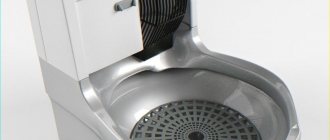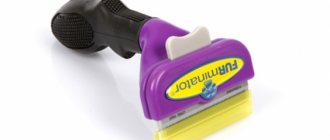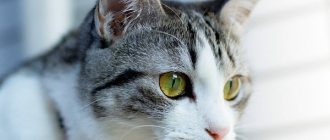This question was sent by our reader. You can also ask Lifehacker your question - if it is interesting, we will definitely answer.
How to safely calm a cat if it does not tolerate travel well: it is very nervous when sitting in a carrier, and literally throws tantrums every time? It is advised to give valerian before traveling, but is it harmful?
Olga
Elena Gogua
Veterinarian, author of a blog with advice for pet owners.
Cats generally don't like to travel. They like routine and their home because it makes them feel safe. There are two ways to solve your problem.
Preparing for the trip
To travel with a pet, you need to stock up on certificates and treat the animal for parasites. Be sure to have a veterinary passport of the cat with you, which indicates: gender, breed, nickname, date of birth, etc. The owner's details are listed in a separate column. The document contains the following information:
- marks for prevention and treatment of worms;
- a list of mandatory vaccinations;
- data on surgical interventions;
- about the implementation of the chip (if any).
The rules change from time to time, so it is recommended to find out about all the points in advance. It is recommended to take wet wipes and disposable diapers with you, as cats often get seasick. To travel by train or plane, you will need to purchase an additional ticket for your pet.
Leave a request for a cat hotel
Where to start getting used to traveling
It is necessary to accustom the animal to being carried while still a kitten so that it calmly reacts to a confined space. If you plan to take an adult cat on a trip, then it is worth treating the box with special pheromones. This way he will get through the road more calmly. If you are traveling by car, you should introduce your furry friend to the car. You can take him in your arms and sit in the salon. Let him sniff everything, climb around the chairs, then you need to start the engine for a short time. The next day you can take a ride around the house. After letting your pet out at home, you should praise him and treat him with goodies. It is advisable to do such training within a week or two before traveling. The purpose of short walks is to let the cat know that it is not in danger.
Causes of motion sickness
The cat is less likely to get sick if it is in a carrier or covered box. In the dark, surrounded by walls, your pet will feel safe.
Veterinarians justify a cat’s acute negative reaction to a trip by exposure to stress factors and a physiological reaction due to a weak vestibular apparatus. A change of scenery, a strong smell of gasoline, and deafening noise from cars and people causes stress and panic in pets, which can lead to poor health and a desire to empty their stomach. If the animal travels in transport for the first time, the negative symptoms intensify. Research has also shown that in a moving car, the part of the cat's brain that controls gagging is activated, a possible explanation is a reaction to strong vibration and rapidly changing objects outside the window.
How cats behave on the road
Every animal has its own character and health characteristics.
Even a cat accustomed to the road can become frightened by something and behave inappropriately. If a pet is transported for the first time, it usually begins to meow heart-rendingly, rush around in the box, and may urinate or drool. Some owners, wanting to help, open the carrier. Advice: don’t do this, the “prisoner” will try to get out of the car, no matter what the cost. A runaway animal will be difficult to find later. It is advisable to put a collar on your pet with the owner’s phone number before the trip. It is necessary to securely secure the carrier in the car so that it does not fall and the cat is not injured in it. Some people take their pet on a car trip wearing only a harness. This way you can transport animals that have been in a car more than once. They breathe calmly, lie in their arms or watch the road through the glass, and react adequately to noises and sounds.
What happens to a cat during a sudden trip?
If your pet is not used to traveling in a car or public transport, an unexpected trip will put him in a state of stress. There are often situations when cats “run along the ceiling” all the way, growling at their beloved owners. In addition to excitement, the animal may not control its physical urges and nausea.
As a rule, transportation is carried out using a special bag in which the animal is placed. In such a carrier the cat can calm down; its bedding, diaper, food and water can be placed there. If there is no such carrier, you will have to twist around to ensure a smooth ride and maximum comfort for the animal.
What is the best way to transport a cat?
Cats have sharp teeth and claws; in a stressful situation, they can even dig into their beloved owner. On the road, it is recommended to purchase a spacious plastic box with a lattice door and side viewing windows. The device is convenient for traveling with your pet in any vehicle, as it is made of durable plastic. The hard bottom allows the cat to stand confidently on its paws and protects it from bumps and falls during traffic. Open carrying areas provide great visibility and airflow. Plastic boxes are light weight and easy to clean. For short distances, you can buy a metal cage, but only for calm cats.
Handy sedatives: how else to help your four-legged friend
Don’t forget that your furry pet, although it sometimes behaves willfully and excessively mannered, depends on warmth and affection. Especially in a stressful situation, when everything familiar is replaced by the unknown and dangerous. Simple stroking and tickling behind the ear will reassure the animal. Warm words of support, spoken in a cat’s native voice, will be a powerful help in the fight against nervous tension. And it doesn’t matter that the meaning of the words will be incomprehensible to the cat - the intonation with which they are spoken, the emotional message, is much more important. After all, only the owner knows how to caress and cheer up his furry friend. And, of course, do not forget about calmness - the animal will intuitively convey the state of its owner. It may be worth taking care not only of a sedative for your cat on the road, but also in case of stress and poor emotional well-being while traveling, purchase a human sedative. Have a pleasant journey and good mood along the entire journey to both the owner and his furry pet!
How to calm down without drugs
It has long been known that the owner’s voice has a calming effect on the animal. In an extreme situation, this will help the cat cope with emotions. The first signs of a worsening condition are rapid breathing with the tongue hanging out, nervous movement around the cage. If possible, you should bring the box with your pet to an open window. A gentle conversation in a calm tone will help the cat relax and calm down. Veterinarians advise singing anything to an animal on the road - a lullaby, a cheerful or sad melody.
Before traveling, it is recommended to purchase cat supplies soaked in calming pheromones at the pet pharmacy. This could be: a collar, an aerosol can, wet wipes, and other means. Peppermint essential oil, herbal infusion, perfectly relaxes.
Special food additives also relieve anxiety in animals. The components are selected in such a way that they block the excitation of nerve fibers in the brain. The cat will calmly endure the trip, perhaps even sleep.
Drugs with chemical composition
These products can only be used after consultation with a veterinarian and after prescribing the required dosage for each specific cat. They have quite a few contraindications and are used exclusively in emergency situations:
- Buspirone (tablets). An effective remedy for combating stress in cats. However, the effect of the medicine does not begin immediately, but after several weeks of use (about a month). It has the effect of accumulating in the animal’s body. Prescribed for phobias in animals.
- Diazepam is a strong tranquilizer. It quickly calms and relieves aggression in cats, but has a number of contraindications.
- "Vetranquil" (liquid for injections). Very quickly calms down, eliminates excitability and nervousness of the animal. Begins to act in a few minutes.
- "Amitriptyline" (liquid for injections). Used for injection into the muscles and veins of the animal. Has a strong sedative effect. Relieves aggression and severe stress in cats. It works quickly. It has a number of contraindications.
- "Xylazine" (liquid for injections). Has a strong sedative effect. It starts working in a few minutes. It will help relieve the animal’s strong excitability, aggression, and tension. It has a fairly large list of contraindications.
What to do in crisis situations
— When traveling in a car, you should never let the cat out of the carrier, otherwise you may provoke an accident.
It’s worth trying to lower the box with the cat at your feet onto the mat and turn on the airflow. — Cover the box with a terry towel or disposable diaper so that the cat does not see flashing cars. You need to leave a gap at the bottom for air to enter.
- If the animal continues to scream, then you should talk to it gently. This should be done by the passenger, but not by the driver, so as not to create an emergency situation.
— It is advisable to stop and take your pet out into the fresh air. Sometimes a cat wants to fulfill its physiological needs. For an indoor cat, it is better to use a litter box that she is used to.
- You can offer water, distract your pet with a game.
— If a cat is under extreme stress, then you cannot do without an anticonvulsant drug. The medicine has an analgesic and strong sedative effect. You should always have the drug on hand, it will not cause much harm, but there is a condition - the veterinarian must select the dosage.
Don't be afraid to travel with a pet, it's exciting not only for you, but also for your pet. You won't both need to worry about separation, just prepare thoroughly.
In our hotel for cats, we offer our clients a Transfer service; if you do not have the opportunity to bring your pet in person, we will do this in the most comfortable conditions for the cat.
Bestsellers
According to employees of veterinary pharmacies and pet stores, several anti-stress drugs are in greatest demand. Moreover, the most popular ones are domestically produced.
"Cat Baiyun" ()
Available in two forms: tablets and drops. The latter are the most popular. Contains extracts, decoctions and infusions from plant materials (motherwort, hops, oregano, mint, valerian, peony, etc.). The undoubted advantages of the drug include its natural composition and low price. The inconvenience lies in the need to pour liquid into the mouth 3-4 times a day, as well as the presence of age restrictions: it is indicated only for animals from 10 months. In addition, valerian, which is part of the drug, can cause agitation in cats.
Article on the topic
Animals in the country: how to prepare for a trip with a pet?
"Stop stress" ()
Just like “Cat Bayun”, it is available in tablets and drops, and the liquid form is also more popular. As active ingredients it contains the tranquilizer phenibut and a complex of aqueous extracts of medicinal plants (peony, Baikal skullcap, hops, motherwort, mint and valerian officinalis). The packaging of tablets and drops varies: separately for cats and for dogs. The price of Stop-Stress in pharmacies is low, but if you look closely at the main component, phenibut, not everything is so rosy. The fact is that it can cause drowsiness, nausea, vomiting, and inappropriate behavior. “Stop-stress” is contraindicated for pregnant, lactating animals, young animals under 1 year old, as well as for diabetes mellitus and diseases of the genitourinary system. Take the drug twice a day, and start taking it 3-5 days before the trip.
"Fospasim" ()
Homeopathic medicine. Release form: drops and solution for injection. Consists of natural ingredients. In addition to its calming effect, it improves orienting reactions (can also be used at exhibitions) and promotes rapid adaptation. Does not cause drowsiness or depression of consciousness. Used once a day, the effect is noticeable 30–60 minutes after administration. A definite plus: it can be used for all animals (rodents, ferrets, birds, etc.). There are no age restrictions or contraindications. It costs more than the two above mentioned, but is more convenient to use (once a day).
Vacation without problems. How to keep your pet healthy in the country?
More details











